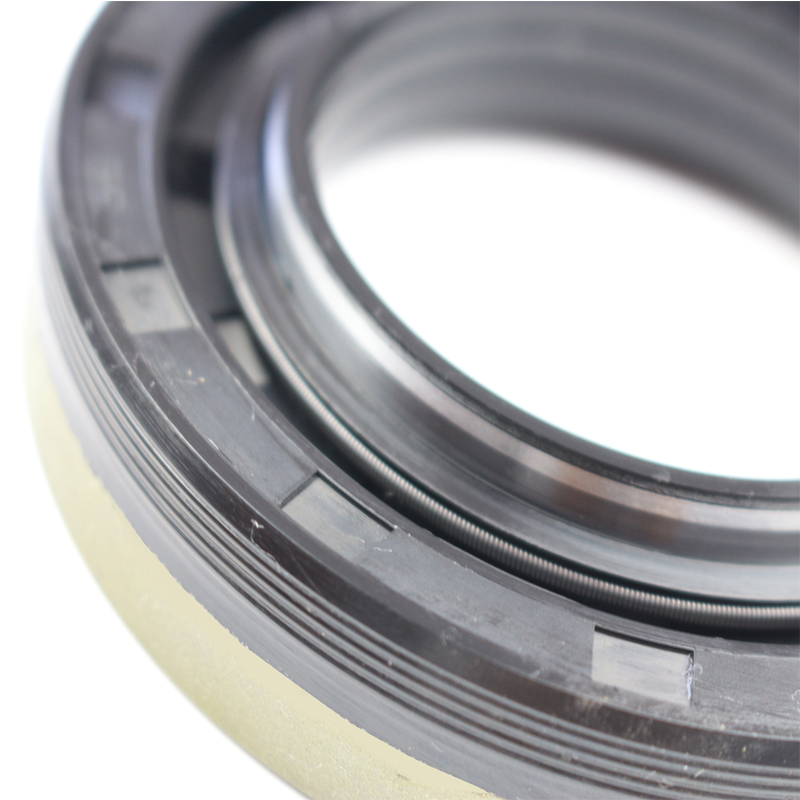rear differential axle seal
Understanding Rear Differential Axle Seal Importance, Function, and Maintenance
The rear differential axle seal is a crucial component in the overall function and longevity of a vehicle's drivetrain system. This small yet essential part plays a significant role in maintaining the integrity of the differential assembly, ensuring that the gears within operate smoothly while preventing contamination from external elements.
What is a Rear Differential Axle Seal?
The rear differential axle seal is a rubber or metal gasket that sits at the point where the axle shafts enter the rear differential housing. Its primary function is to seal the area and prevent differential fluid from leaking out, while also keeping contaminants like dirt and moisture from entering. This seal helps maintain the proper lubrication of the gears and bearings within the differential, which is vital for optimal performance.
Importance of the Rear Differential Axle Seal
1. Prevention of Leaks The most apparent function of the axle seal is to prevent fluid leaks. Differential fluid lubricates the gears, ensuring they operate smoothly and efficiently. A leak can lead to insufficient lubrication, causing increased friction and heat, ultimately leading to significant damage and costly repairs.
2. Protection Against Contaminants The axle seal not only prevents fluid loss but also blocks dirt, debris, and moisture from entering the differential housing. Contaminants can cause wear and tear on the gears, leading to premature failure of the differential system.
3. Enhanced Performance and Longevity By maintaining the necessary lubrication and keeping contaminants at bay, a well-functioning axle seal contributes to the overall performance and longevity of the vehicle. With the differential operating correctly, vehicles can have better handling, improved traction, and increased stability during cornering.
Signs of a Failing Rear Differential Axle Seal
rear differential axle seal

As with any automotive component, the rear differential axle seal can wear out over time
. Recognizing the signs of a failing seal is essential for preventing further damage- Fluid Leaks The most noticeable sign is fluid accumulating underneath the vehicle. If you see differential fluid (often a honey-brown color) pooling or dripping from the differential area, it’s likely that the axle seal is failing.
- Unusual Noises If you hear grinding or whining noises coming from the differential, it may indicate that the gears are not being adequately lubricated due to fluid loss caused by a compromised seal.
- Vibration An increase in vibration while driving, especially when turning, may suggest that the differential is not performing properly due to a lack of lubrication.
Maintenance and Replacement
Maintaining the rear differential axle seal is crucial for ensuring the longevity of the differential and overall vehicle performance. Regular inspections, especially during routine oil changes, can help identify potential issues before they escalate.
If you suspect that the axle seal is failing, it is wise to take action quickly. Replacing a rear differential axle seal typically involves draining the differential fluid, removing the axle shaft, replacing the old seal, and then reassembling everything. Given the complexities involved, it's often best to have this task performed by a professional mechanic.
Conclusion
The rear differential axle seal is an essential yet often overlooked component of a vehicle's drivetrain. Understanding its role and recognizing the signs of failure can help drivers maintain their vehicles effectively. Regular inspections and timely replacements can ensure that the rear differential remains well-lubricated and free from contaminants, ultimately leading to better vehicle performance and reduced repair costs. Taking care of this small but significant part can make a big difference in the overall health of your vehicle's drivetrain system.
-
Simplifying Oil Changes: A Comprehensive Guide to Oil Drain Plugs and Their Variants
News Aug.04,2025
-
Mastering Oil Drain Maintenance: Solutions for Stripped, Worn, and Upgraded Oil Plugs
News Aug.04,2025
-
Fixing Oil Pan Plug Issues: Leaks, Stripped Nuts, and the Right Replacement Solutions
News Aug.04,2025
-
Everything You Need to Know About Oil Drain Plugs: Sizes, Fixes, and Upgrades
News Aug.04,2025
-
Choosing the Right Oil Drain Plug: A Guide to Sizes, Materials, and Drain Innovations
News Aug.04,2025
-
A Complete Guide to Automotive Drain Plugs: Types, Problems, and Innovative Solutions
News Aug.04,2025
-
The Ultimate Guide to Car Repair Kits: Tools and Essentials Every Driver Should Own
News Aug.01,2025
Products categories















